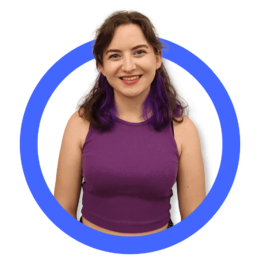Have you ever stumbled upon a stunning website and felt in awe of its captivating design and impressive functionality? The way a website looks, and functions can leave a lasting impression. As a website owner, developer, or simply a curious individual, you may wonder about the themes and plugins responsible for creating such a remarkable online experience. Understanding the tools behind a website’s design and features is like peeking behind the curtain of digital magic. It satisfies your curiosity and provides valuable insights and inspiration for your web projects. You may need a WordPress theme detector or various methods to satisfy this curiosity.
As we journey together, we’ll explore various WordPress theme detector methods to detect the themes and plugins a website uses. By tapping into these resources, you’ll gain insights that can inspire your creative endeavors and help you enhance the user experience of your websites.
Utilize an Online WordPress Theme Detector
The online world offers many tools specifically designed to identify the themes and plugins used on a website. Simply input the website’s URL into these tools, and within moments, you’ll receive a comprehensive report revealing the detected themes and plugins.
One of the most popular tools is WhatWPThemeIsThat as WordPress Theme Detector. It not only detects the theme but also provides additional information about the theme’s author, rating, and popularity. ScanWP is another powerful WordPress theme detector that scans the website and presents you with a list of plugins used, allowing you to explore their functionalities further. Additionally, BuiltWith offers a comprehensive analysis, including information on hosting, frameworks, and other technologies employed by the website.

Thus, by leveraging these online WordPress theme detectors, you can quickly gather information about the theme and plugins, giving you a head start on understanding the website’s building blocks. Later find them, you should learn how to install WordPress plugins and themes.
Inspect the Page Source Code
For those with a little technical know-how, examining a website’s source code can yield valuable information about its theme and plugins. By right-clicking on the webpage and selecting “View Page Source” (or similar options, depending on your browser), you can access the code underlying the site.
While delving into the source code may seem daunting initially, it can provide a deeper understanding of a website’s structure. Look for specific CSS or JavaScript files containing references to the theme or plugin names. Themes often have distinctive file names, while plugins might have dedicated folders within the website’s directory structure. This method requires a basic understanding of coding and may be more suitable for developers or those comfortable with web technologies.
Analyze Styles and Functionality
Themes and plugins often leave a unique visual and functional footprint on a website. By paying close attention to certain design elements or distinctive features, you can gather clues about the tools employed.
Observe the website’s layout, typography, color schemes, and special effects or interactive components. Themes have predefined layouts and styling options that can give them away. For example, some plugins might introduce custom widgets, shortcodes, or specialized functionality that sets them apart. Additionally, some plugins may add identifiable elements like watermarks or signature styles to images, providing further insights.
Consult Online Forums and Communities
The vast online community has forums, discussion boards, and social media groups where web enthusiasts and developers share their knowledge and experiences. Joining these communities and posting a query about identifying a particular theme or plugin can yield fruitful results.
Platforms like Stack Overflow, WordPress support forums, or specialized web development communities are great places to seek assistance. These platforms are full of people who can be referred to as WordPress theme detector. Seasoned experts and passionate developers often offer their insights, recommending specific tools or providing guidance based on their expertise. Engaging with the community helps solve your immediate query. Also, it allows you to expand your network and learn from others in the field.
Be proactive and share your observations or specific challenges in identifying themes and plugins. The community’s collective wisdom can be a valuable resource in your quest.

Contact the Website Owner or Developer
If you can reach the developer or website owner, you don’t need any WordPress theme detector. When all else fails, contacting the website owner or developer can provide you with accurate information about the theme and plugins employed. Look for a “Contact Us” page or any provided contact details on the website. Craft a polite and concise message expressing your admiration for their site and your desire to learn more about the tools they utilized.
Most website owners appreciate such inquiries and are usually willing to share their knowledge. So, they might reveal the name of the theme or plugins, provide recommendations, or even offer insights into their customization and implementation process. Building relationships with website owners and developers can also open doors to mentorship opportunities or collaborations in the future.
Remember to approach the website owner or developer with respect and gratitude for their work. Acknowledge their expertise and express your genuine interest in learning from them. Thus, this personal touch can foster goodwill and result in fruitful conversations beyond discovering the theme and plugins.
Seek Attribution Information
Attention closely to the website’s footer or backend settings, as some themes and plugins include attribution information. These credits can provide valuable clues about the specific tools in use. By carefully examining the website’s attributions, you may gain insight into the themes and plugins responsible for its impressive design and functionality.
Explore the Developer’s Portfolio
Also, being a WordPress theme detector is an option. When you come across a website that captivates you with its design and functionality, take note of the developer or design agency behind it. Visit their website or portfolio to see if they mention the themes and plugins they commonly utilize because developers often showcase their preferred tools as a testament to their expertise. So, you may discover the exact themes and plugins contributing to their remarkable creations by analyzing their portfolio.
Harness Browser Extensions
Browser extensions conveniently identify themes and plugins with a simple click. Tools like Wappalyzer, BuiltWith, or Chrome Sniffer offer valuable insights into the technologies and tools employed by a website. Install these extensions on your preferred browser, and navigate to the website in question. Then, let the extension perform its detective work. This streamlined approach can save you time and effort while providing valuable information.
Conclusion
As a result, detecting the theme and plugins employed by a website may seem challenging, but armed with the right tools and strategies, you can unravel the mystery. Whether you opt for online WordPress theme detectors, source code analysis, visual cues, online communities, or direct communication, each method offers its unique approach to uncovering the secrets behind a website’s design and functionality.
The online WordPress theme detectors and plugin detectors provide a quick and automated way to identify the tools used, saving you time and effort. Examining the source code requires technical proficiency but can offer deeper insights into the website’s structure. Analyzing styles and functionality lets you pick up on visual and interactive elements that distinguish specific themes and plugins. Engaging with online forums and communities exposes you to a wealth of knowledge and experiences shared by fellow web enthusiasts and developers. And when all else fails, a direct conversation with the website owner or developer can provide accurate information and potentially lead to further collaboration.
So explore the digital realm, and unveil the captivating world of themes and plugins. As you unlock the mysteries behind websites, you’ll gain a deeper understanding of the tools and techniques that power exceptional online experiences. Happy detecting!
Frequently Asked Questions About
If online detectors fail to identify the theme used by a website, you can try examining the source code manually. Look for specific CSS or JavaScript files containing references to the theme’s name or unique identifiers. Additionally, pay attention to any comments or annotations within the code that may provide clues about the theme.
Yes, visual cues and design elements often hint at using a specific plugin on a website. For example, certain plugins may introduce custom widgets or unique layout options that create distinctive visual elements. Look for specialized functionality, interactive components, or specific features that stand out from the rest of the website. Watermarks or signature styles applied to images can also indicate the presence of a particular plugin. By paying attention to these visual cues, you can narrow down the potential plugins used.
Yes, analyzing a website’s source code can provide valuable insights into the customization and implementation of themes and plugins. By examining the code, you may find additional CSS or JavaScript files specific to certain plugins or modifications made to the theme. Look for custom classes, IDs, or scripts that indicate changes from the default theme or plugin settings.
Yes, it is possible to detect hidden or not easily visible plugins on a website’s front end. While these plugins may not leave obvious visual cues, you can still uncover their presence through source code analysis. Look for script references or function calls that indicate the use of a particular plugin, even if its effects are not directly visible on the front end.
If online forums and communities do not provide the desired information about themes and plugins, you can try a few alternative methods. Use specialized browser extensions, hire a professional developer or consultant, and reach out to the theme and plugin developers.
If online forums and communities do not provide the desired information about themes and plugins, you can consider the following alternative methods. Use the online theme and plugin marketplaces, and analyze third-party services or integrations.





No comments to show.